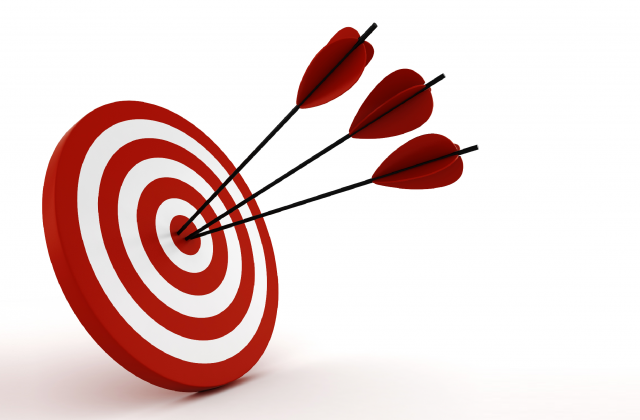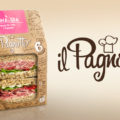
Perhaps, not everyone will remember an old ad whose slogan was more or less like this: “To win, we need a good start!”
Yes, starting on the right foot is important. When developing a product packaging, the first step is the most important phase. It means directing efforts, resources and research in the right direction.
When you start badly, instead, you end up worse. And I am not talking about an ugly packaging or obvious mistakes. I am simply saying that the job done and the money invested do not produce results.
It is needed very little to throw away all the efforts made in the company!
So, where do we start from?
Good designers? An experienced art director? A young creative team?
I think it is a lot easier. I hate to complicate my life and I prefer clear answers at hand.
This is why I always start from the client.
We begin with a careful briefing, oriented to gather the most important information for the entire project.
Whilst it is true that our efforts in creating a packaging aim to increase product sales – addressing the final consumer, it is also true that only the entrepreneur (or a real manager) can provide us with some information about the product and the idea behind it.
NOW, PAY ATTENTION
During a briefing session with the entrepreneur (or manager), you have to precisely understand:
– How he sees his product
– What he wants to communicate
– What he wants to achieve
So, if I had to answer the big question “What is the most important aspect of the packaging development?”, I would say it’s the ability to get a proper briefing from the client.
In 90% of cases, the reason for a packaging failure must be sought in a wrong briefing.
I assure you that, even nowadays, there are clients who do not know how to give clear instructions about the goal they want to achieve. This is definitely a problem, but a bigger problem exists within the agency that does not know how to ask the right questions.
Today, I want to unveil a procedure that you will find very useful whether you are the client or the agency.
I am very good at providing an important contribution to finding solutions that clients often had not considered, but, at the same time, I acknowledge the relevance of knowing the whole idea behind the product, expectations and vision connected to the product and its marketing.
That is why we proceed with extreme attention in the first phase, with a precise method that gathers the information we need to take the first step in the packaging development.
7 points in chronological order:
“Do you have the power to decide?” is the question to which we must find a clear answer.
Without clarifying this point, it is useless to continue.
It may happen that the client does not have a clear vision on this, but a few specific questions can help him view the positioning of his product outlining, also, the position of competitors.
Let’s assume that I am a buyer: “Why should I buy your product and not that of the competitor?”
Mistakes do happen. This is an opportunity to double-check and to make sure of the accuracy of the answers.
“Who is the ideal customer for your product?” is what we want to understand thanks to this question, while, at the same time, we get a confirmation on the previous answer.
“What is the price at the point of sale and what are competitors’ prices?” These data are vital to analyze the market in which you are placing the product.
For this reason, you must strive to find a single thing to communicate through the packaging in a simple way.
“If you had to communicate your product with one word, what would the word be and why?”
We help the client reach this conclusion and often the answers given to the previous 4 points are the primary orientation factor. But, it remains imperative to leave the briefing session with “the” word.
Example: Tradition, Innovation, Easy, Unique …
In other words, “What is the magic ingredient of your product?”
The “magic” ingredient can simply be something that your competitors do not communicate.
I think how some companies communicate with emphasis their product characteristics, such as the yellow-fin tuna, making it their magic ingredient, when many other companies communicate yellow-fin tuna with no focus on that aspect. (have you noticed how simple it can be?)
Likewise goes for the double malt beer, roasting of coffee, maturing of cheese and I could go on and on…
So “What is the magic ingredient of your product?”
In summary, here’s how to give or take a briefing:
- Make sure to talk to who has decision-making power
- Product positioning: why that product and not others?
- Identify the target audience
- Knowing the product checkout (price at point of sale)
- Simplify: how to define the product with one word
- What is the magic ingredient? (shopping experience)
- Sharing and approval of the final document
It is true. Creating a packaging is one thing we do because the client not always has clear ideas; but starting the project ignoring him or underestimating his ideas is a serious mistake that you always pay.
We specialize in creating packaging that sell and work on this every day, but we are convinced that no one can replace you when it comes to YOUR product and the idea that comes with it.
We will be happy to get precise and detailed briefings for your products. Contact us now to get more information.
In 1996 enters in the world of marketing, in 1999 founded Ardigia Marketing Funzionale (Ardigia Functional Marketing), in 2013 founded Packaging in Italy, Design Agency for Packaging Positioning™




Pingback:The right packaging solution for your product takes time, but it makes all the difference